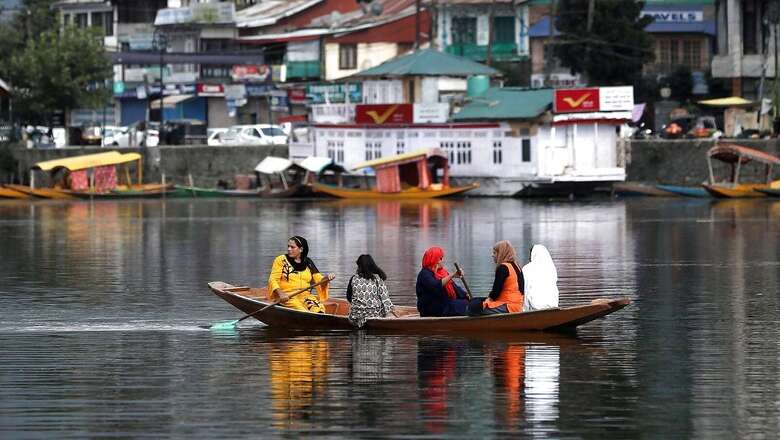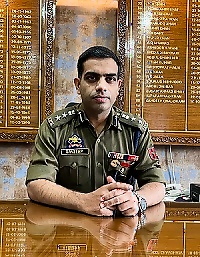
views
Whom we trust, what we share on social media and how we react to information all depend on our perception of the world. As a result, there are many media organisations, social media influencer-individuals and foreign actors who are interested in shaping public perception about a country, place or people. It is really incredible how much factual information comes out through media reports and how much of it is manufactured to let the holes in a story pass off as nuanced sophistry. But for a consumer of information, it is very hard to know what she is not seeing. It is even scarier if a section of the mainstream media thinks that spreading disinformation or falsehoods won’t be challenged. May be, the motivation behind such actions is to weaken the credibility of a nation state.
In 2017, Claire Wardle and Hossein Derakshan published a report that mapped out the differences between disinformation, misinformation and malformation. Disinformation is the content that is intentionally false and designed to cause harm. Such content is motivated by three distinct goals: to make money; to have political influence, either foreign or domestic; and to cause trouble for the sake of it. They identified misinformation as false content shared by a person who does not realise it is false or misleading. Disinformation produced by a section of media gets amplified and spreads as misinformation when it is shared by people without realising it is false.
One powerful source of the increasing spread of disinformation and fake news on Kashmir is social media. Social media can be highly effective in increasing the reach of a story but need not contribute in terms of value addition through facts and perspective. On social media, people often categorise themselves as leftist, liberal, rightist or centrist, and internalise shared-on-social media experiences as part of who they are. Stories published by mainstream media and shared on social media platforms like Twitter often cherry-pick facts and testimonies. This leads to cyclical increase in consumption of perception-confirming information.
Reporting on Jammu and Kashmir suffers from this confirmation bias. One example of such disinformation produced by a mainstream media organisation was a report published in a national daily on July 27, 2021 with a Mumbai time stamp.
The article quoted three cases of people arrested under Unlawful Activities (Prevention) Act to put forth its arguments. The article’s basic premise was based on the case of one Sahil Nazir who according to the author was ‘picked’ on March 10 in the town of Awantipora after being accused of planning a suicide attack. But Sahil Nazir was arrested on April 18 under FIR number 46/2021 U/S 18,19,20,38 of UA(P)A. He was involved in providing logistic support to terrorists and was a close and trusted associate of terrorists Sameer Dar and Kifayat Ramzan who belonged to banned terrorist outfits. The fictional piece falls flat because the individual mentioned in the article has been in police and judicial remand following the due process of law. The article mentions that the individual had been released and had to be hospitalised. But as per legal records available, the individual is in judicial remand since the day of his arrest.
Other individuals who have been quoted in the article have not mentioned a single fact in their statements but relied on rhetoric. The allegations put forth by them are very serious in nature but avoidance of putting forth a single fact shows that the rhetoric is a conscious choice adopted, given the capacity of the allegations to generate sensation. The article mentions that the Unlawful Activities (Prevention) Act permits detention without charges, which is a sad commentary on the legal understanding of the author. The Act clearly defines what is ‘unlawful’ and individuals who are arrested under this Act are charged with engaging in unlawful activities. The article was written to cause sensation by provoking emotions through anonymous allegations of torture without any factual background. The article and its sharing on social media platforms is a classic case of disinformation campaign supported by confirmation bias.
This piece is only the tip of the iceberg. The design involved in manufacturing such stories and building the narrative has been exposed. There are two types of people involved in anti-India activities in Kashmir. On one side are those from rural and disadvantaged backgrounds who support terrorism by joining terrorist ranks and engaging in overground worker (OGW) activities. On the other hand are people from well-off families settled abroad, in other cities of the country, or in Srinagar who tweet anonymously or with names as per their convenience and the criminality of the content and push boys from disadvantaged families to die for a cause that they propagate day in and day out while sipping their coffees and doodling on their phones.
It is tempting to interpret disinformation stories published by international media organisations as ground reporting by their staffers. But such stories, for all their absurdities and factual incorrectness, are mostly written or produced by Kashmir-based stringers who charge anything between Rs 800 and USD 250 and can produce a story confirming the perceptions of the readers or viewers of such media organisations while conveniently replacing Jammu and Kashmir with terms like India-administered Kashmir in clear violation of law.
Many media watchers believe that this form of coverage is economical for large media organisations and gets large number of clicks given the sensation such work produces. The way such disinformation travels from faraway places in Kashmir to the websites of a few mainstream media organisations as field stories, it becomes very difficult to counter them. It is hard to have an open conversation about the loopholes in information gathering and dissemination process adopted by the media because turf belongs to them and it is more of a ‘my game, my rules’ approach. On politically-sensitive issues like Kashmir, there is a great deal of polarisation in the media and amplification or suppression of arguments occurs on the basis of which side of the divide you belong to. Facts or their absence in a story become irrelevant.
So every time the reader assumes that such fake stories are efforts to bring forth the truth about Kashmir, one should pause and question if this is a powerful weapon of narrative that is being used in a larger battle.

Read all the Latest News, Breaking News and Coronavirus News here.


















Comments
0 comment